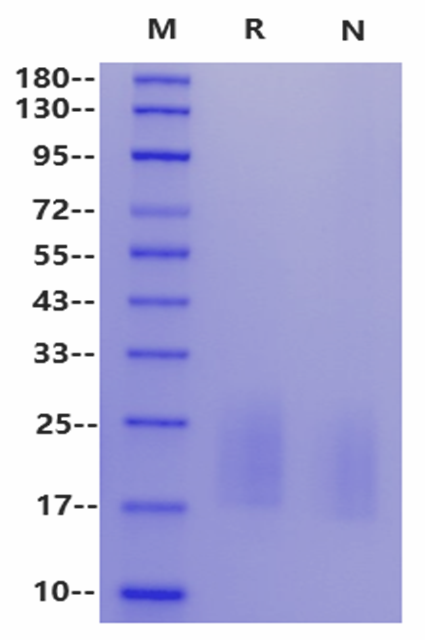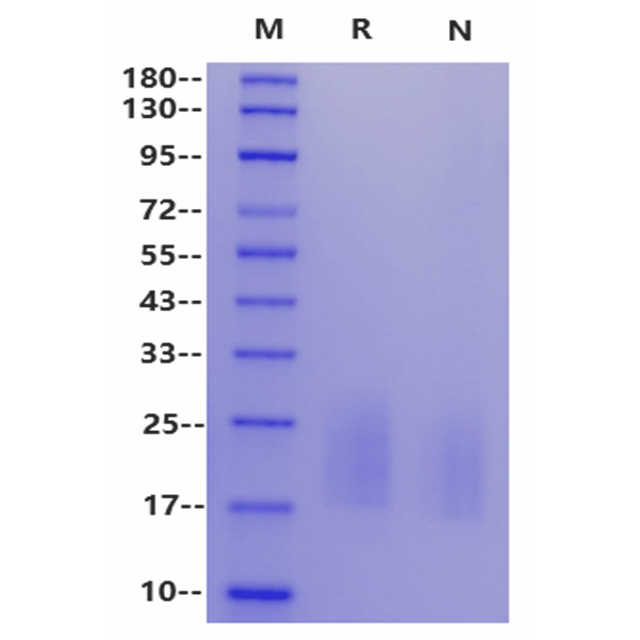Product Details
Product Details
Product Specification
| Species | Human |
| Synonyms | T3D, CD3-DELTA, CD3D |
| Accession | P04234 |
| Amino Acid Sequence |
Phe22-Ala105, with C-terminal 8*His FKIPIEELEDRVFVNCNTSITWVEGTVGTLLSDITRLDLGKRILDPRGIYRCNGTDIYKDKESTVQVHYRMCQSCVELDPATVAHHHHHHHH |
| Expression System | HEK293 |
| Molecular Weight | 17-30kDa (Reducing) |
| Purity | >95% by SDS-PAGE |
| Endotoxin | <0.1EU/μg |
| Conjugation | Unconjugated |
| Tag | His Tag |
| Physical Appearance | Lyophilized Powder |
| Storage Buffer | PBS, pH7.4 |
| Reconstitution | Reconstitute at 0.1-1mg/mL according to the size in ultrapure water after rapid centrifugation. |
| Stability & Storage | · 12 months from date of receipt, lyophilized powder stored at -20 to -80℃. · 3 months, -20 to -80℃ under sterile conditions after reconstitution. · 1 week, 2 to 8℃ under sterile conditions after reconstitution. · Please avoid repeated freeze-thaw cycles. |
Background
T-cell surface glycoprotein CD3 delta chain, also known as CD3D, is a single-pass type I membrane protein. CD3 delta/CD3d is part of the T-cell receptor/CD3 complex (TCR/CD3 complex) and is involved in T-cell development and signal transduction. The encoded membrane protein represents the delta subunit of the CD3 complex, and along with four other CD3 subunits, binds either TCR alpha/beta or TCR gamma/delta to form the TCR/CD3 complex on the surface of T cells. CD3 delta/CD3d contains an 84 amino acid extracellular domain, a 21 amino acid transmembrane domain, and a 45 amino acid cytoplasmic domain. Deleterious mutation of the CD3 delta encoding gene in the human leads to a severe combined immunodeficiency characterised by the complete absence of mature T cell subpopulations including TCR alpha/beta and TCR gamma/delta. In humans the absence of CD3 delta results in a complete arrest in thymocyte development at the stage of double negative to double positive transition and the development of gamma delta T-cell receptor-positive T cells is also impaired. CD3D, together with CD3 epsilon (CD3E), CD3 gamma and CD3 zeta, and the T-cell receptor alpha/beta and gamma/delta heterodimers, forms the T cell receptor-CD3 complex. T cell receptor-CD3 complex plays an important role in coupling antigen recognition to several intracellular signal-transduction pathways.
Picture
Picture
SDS-PAGE



